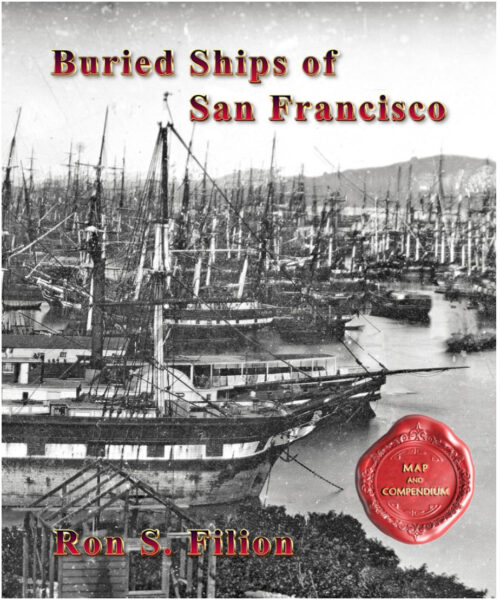
Following the Trail of San Francisco’s Buried Ships
In 2023, historian and author Ron S. Filion published his book Buried Ships of San Francisco, which includes a veritable treasure map of San Francisco, marking the locations of approximately 70 sailing ships (or their remains) that he believes are buried beneath San Francisco’s busy streets. The ships are among those that arrived at the city docks carrying a good number of the estimated 80,000 people who came to California in 1848-1849 — earning themselves the name “49-ers” — after hearing of the gold discovery.
Filion writes, “… well over a thousand ships descended on the small village of Yerba Buena (now San Francisco) and anchored in the shallow cove on the eastern edge of town.”
Many of the ships were abandoned as their passengers and crew made for the hills to seek their own fortunes in gold. Filion describes the scene as a “burgeoning town littered with scores of discarded hulks.” Some of the ships were repurposed for storage and housing, while others were destroyed or burned, or sank. As the waterfront expanded and wharves were built, the cove was filled in, burying many in the foundations of what is now San Francisco’s Financial District.
One particular ship, the Niantic, was beached in 1849 at what is now the corner of Clay and Sansome streets. The Niantic brought 248 passengers from Panama to San Francisco. Afterwards she was used as a storeship until burning to the mud flats in the San Francisco Fire of May 1851. She is listed as the farthest inland of the 44 ships known to be buried in downtown San Francisco.

Other ships include the Rome, which lies buried across the road from the Ferry Building; the Apollo, which is believed to lie beneath the Federal Reserve Building; and an unnamed ship that became part of the Old Ship Saloon on Pacific Avenue. Down the street you could find the Arkansas.
The idea of San Francisco’s being built upon the bones of old ships is intriguing. We already consider the city to be a waterfront or sailing-oriented city, but to think of it in physical terms adds much to the character we envisage.

If you read Filion’s book or follow his map, let us know what you discover.
